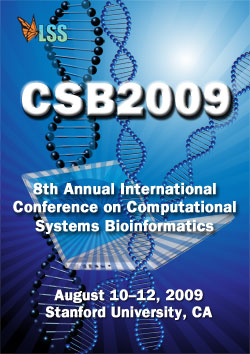Characteristic restriction endonuclease cut order for classification and identification of fungal sequences
Rajib Sengupta, Dhundy Bastola, Hesham Ali*
College of Information Science and Technology, University of Nebraska, Omaha, NE 68182, USA. hali@unomaha.edu
Proc LSS Comput Syst Bioinform Conf. August, 2009. Vol. 8, p. 25-35. Full-Text PDF
*To whom correspondence should be addressed.

Restriction fragment length polymorphism (RFLP) of chromosomal DNA is one of the powerful molecular tools used in the fingerprinting of microorganism and epidemiological studies. In a wet-lab setting, pattern-based classification of organism using RFLP begins with the digestion of DNA with one to two restriction enzymes, which is followed by gel electrophoresis. This wet-lab approach may not be practical when the experimental data set includes a large number of genetic sequences and a wide pool of restriction enzymes to choose from. Alternatively, the RFLP process must be simulated in-silico using computation intensive sequence alignment methods. In this study we introduce a novel concept of Enzyme Cut Order- a biological property- based characteristic of DNA sequences which can be defined and analyzed computationally without any alignment algorithm. In this alignment-free approach a similarity matrix is developed based on the pairwise Longest Common Subsequences (LCS) of the Enzyme Cut Orders. The choice of an ideal set of restriction enzymes used for analysis is augmented by using genetic algorithms, and the target sequences include the internal transcribed spacer regions of rDNA from fungi. The results obtained from this approach show that the organisms that are related phylogenetically form a single cluster and successful grouping of phylogenetically close or distant organisms is dependent on the choice of restriction enzyme used in the analysis. This novel alignment-free method, which utilizes the Enzyme Cut Order and restriction enzyme profile, is a reliable alternative to local or global alignment-based classification and identification of organisms.
[ CSB2009 Conference Home Page ] .... [ CSB2009 Online Proceedings ] .... [ Life Sciences Society Home Page ]